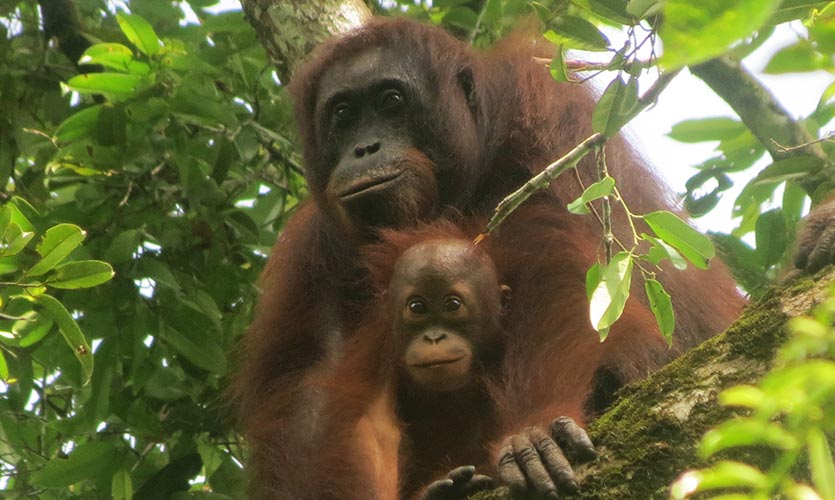Rethinking the orangutan

The critically endangered orangutan—one of human’s closet living relatives—has become a symbol of wild nature’s vulnerability in the face of human actions and an icon of rainforest conservation.
However, new research published 27 June in the journal Science Advances , co-authored by Professor Serge Wich at Liverpool John Moores University (LJMU) and led by the University of Wisconsin Oshkosh, indicates this view overlooks how humans have fundamentally shaped the orangutan known today.
The researchers call for a multifaceted approach to orangutan conservation that incorporates human-dominated landscapes, reduces hunting and increases habitat quality and connectivity.
Professor Serge Wich, who is based at the LJMU School of Natural Sciences and Psychology, says this is especially important for the Tapanuli orangutan, a new species just described in 2017. “There are only 800 left in fragmented forest areas, so these findings must be applied immediately."
Ignoring this obscures understanding of orangutans and impacts conservation efforts, said lead author Stephanie Spehar, an associate professor of anthropology at the University of Wisconsin Oshkosh.
“It was often assumed that environmental factors like changes in fruit availability were responsible for most features of modern-day orangutans, such as the fact that they usually live at low densities and have a restricted geographic distribution,” Spehar said.
The study shows that orangutans were once far more widespread and abundant, with orangutan bones among the most common animal remains in deposits in China, Thailand and Vietnam. These orangutans weathered many environmental changes and may even have lived in a wider range of environments than their modern counterparts.
A widespread reduction in orangutan numbers, which occurred around 20,000 years ago, appears to be closely correlated with indicators of human impact, especially the appearance of projectile weapons that make hunting tree-living prey easier.
Today, orangutans are only found on the islands of Borneo and Sumatra. The ecology and behavior of modern orangutans probably represents an adaptation to environmental factors and long-term human pressures, especially hunting.
Emerging research on orangutans living in heavily human-impacted habitat, such as oil palm and forestry plantations, also highlights that the apes can adjust their behaviour to survive in such areas, at least in the short term. The good news is that orangutans can be conserved in a much larger part of the landscape than previously thought.
The researchers call for a multifaceted approach to orangutan conservation that incorporates human-dominated landscapes but reduces hunting and increases habitat quality and connectivity. Such an approach requires developing sound policies, enforcing existing laws and promoting cooperation among stakeholders.


